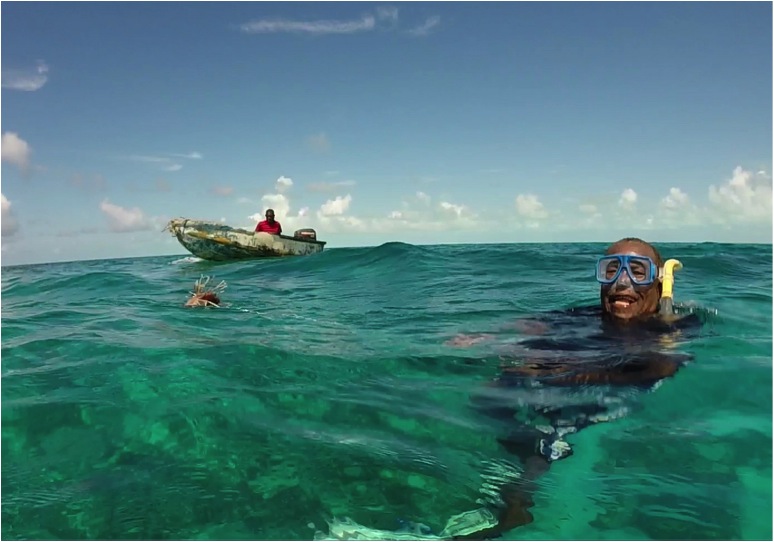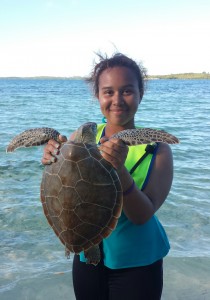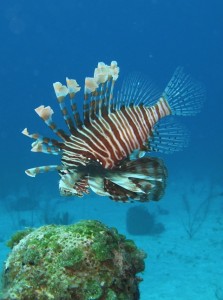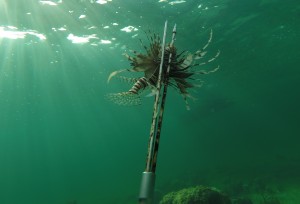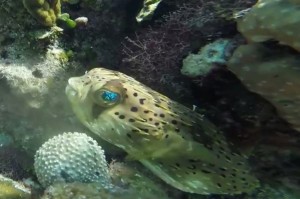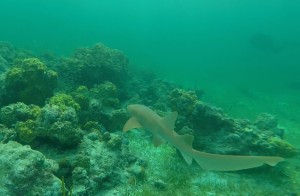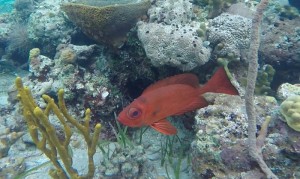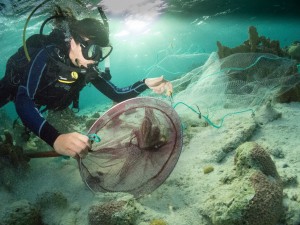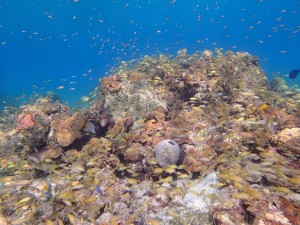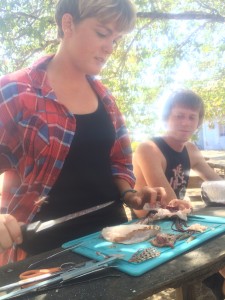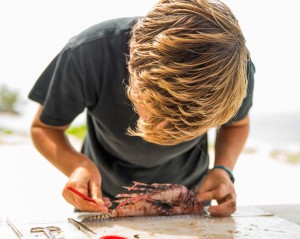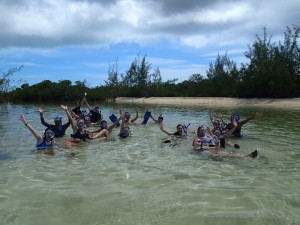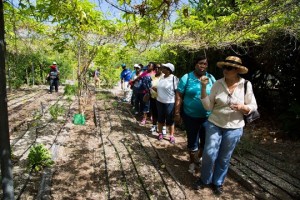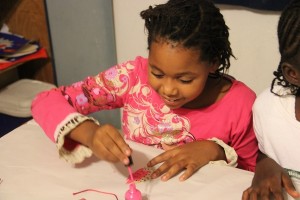
As invasive lionfish decimate Caribbean coral reef systems, consumptive fishery demand is promoted as one of the best ways to control their populations. Recently, though, there is a new reason to find and spear the fish; the characteristic pectoral, pelvic, anal, and caudal fins of the fish are being dried and used by artisans and dilettante crafters to make jewelry pieces. A battle that before was fought with knives, forks, and frying vats is now reinforced by needle nose pliers, silver fasteners, and 24-gauge wire.
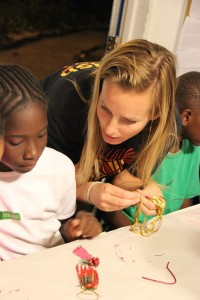
The CEI Lionfish Research and Education Program (LREP) has worked hard this fall to encourage the spread of this new lionfish jewelry trend around Eleuthera. In October they collaborated with the Eleuthera Arts and Cultural Center in putting on The Bahamas’ first-ever Lionfish Jewelry Making and Awareness Workshop. Local artists Shorlette Francis and Sterline Morley joined the Arts and Cultural Center’s Audrey Carey to supply craft materials and construction guidance to the professional artists, handicraft enthusiasts, and community members in attendance. CEI’s Dr. Jocelyn Curtis-Quick gave an overview of the invasion of the lionfish in the Caribbean and explained why it is so important to target these gluttonous fish. The event was such a success that several local artists are now selling lionfish earrings and other jewelry in The Island School’s School Store and around the island.
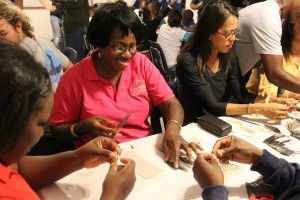
With such positive outcomes from the first event, the CEI LREP team hopes to hold workshops in many more settlements around Eleuthera. During The Island School’s Parents’ Weekend the team was ready to show visiting families how to incorporate additional recycled materials, such as aluminum cans, into lionfish fin pieces. On December 2nd, the team conducted the second workshop open to the public, this one hosted at Deep Creek Middle School. Over 30 community members attended to learn about current CEI research regarding lionfish and try their hands at crafting earrings and holiday ornaments. With the growing community of lionfish jewelry producers and consumers, this new angle for controlling the invasion shows a tremendous amount of promise.
